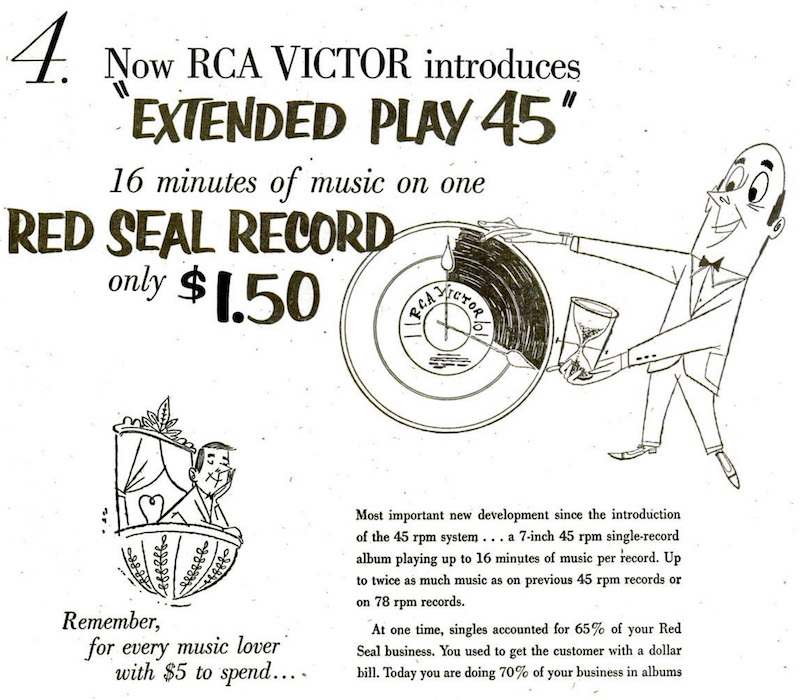Google Books 上で The Billboard (米「ビルボード」誌)のバックナンバーが1942年のものからほぼ全て閲覧可能になっています。これにより、レーベル、レコード製造、アーティストの動向など、当時のレコード業界のさまざまな側面の歴史を調査するのが格段に楽になりました。これまでは、図書館のような施設で閲覧したり、目星をつけた号を古本屋やオンラインオークションで購入するしかなかったのですから、コンピュータ上でネットワーク越しに検索しながら目当ての記事を閲覧できるというのは、隔世の感があります。
Almost all back issues of The Billboard magazine (since 1942) is searchable and browsable on Google Books website. This enables us to do very convenient research through the web, on history of record labels, record production, artists and many other topics on record industries in the past. Previously we had to go to libaries to look for specific back issues, or we had to look for and buy them at second hand bookstores or at online auctions.
今回は、マイクログルーヴレコード黎明期の「コロンビア対RCAヴィクター」 「33 1/3 対 45」回転数競争あたりからはじめて、諸説入り乱れて解釈が分かれている「EP」というタームについて、過去の資料を探ってみましょう。Wikipedia 日本語版 では 33 1/3回転7インチ盤である、と書かれている EP盤ですが、それは 誤り で、あくまで45回転7インチ盤の一種である、ということがお分かり頂けるかと思います。
This time I am looking up some back issues, to what the term “EP” originally stood for – the term sometimes has been misunderstood (and there has been various opinions on it). So let’s get started with the old 1948 article on the “Speed Battle” – 33 1/3 v.s. 45, Columbia v.s. RCA Victor.
Continue reading →

